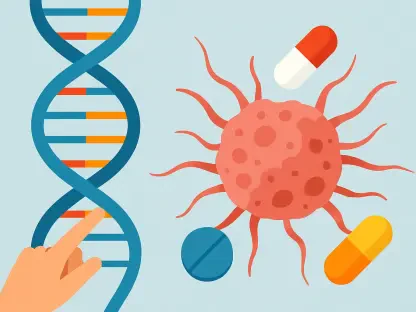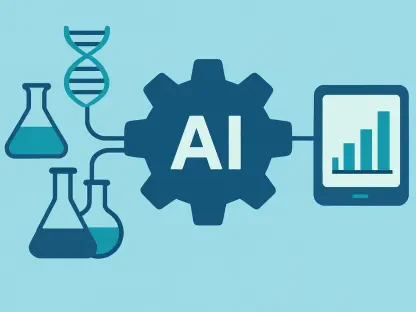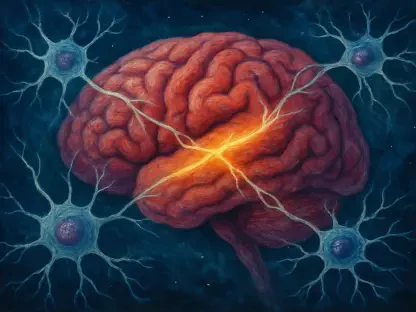Alzheimer’s disease poses a formidable challenge to global health, affecting over 55 million people worldwide and profoundly impacting their cognitive functions and quality of life. As researchers intensify their efforts to discover effective treatment options, early detection of the disease is emerging as a pivotal factor that could potentially unlock new paths for treatment. Current research in this area, aligned with the work led by Annalisa Scimemi at the University at Albany, focuses on understanding the intricate communication patterns of the brain and how they can be utilized for timely diagnosis.
Current State of Alzheimer’s Research
The global prevalence of Alzheimer’s disease continues to rise, highlighting an urgent need for innovative solutions. Despite advances in medical science, existing treatments primarily aim to manage symptoms rather than provide a cure, offering limited relief by slowing the disease’s progression. The challenges faced in curative research are partly attributed to the late stage at which the disease is usually diagnosed after significant cognitive and neurological damage has occurred. A better understanding of the early biological markers of Alzheimer’s could revolutionize treatment approaches.
Trends and Advances in Early Detection
Emerging Techniques and Technologies
In recent years, significant progress has been made in developing novel diagnostic techniques designed for early detection of Alzheimer’s disease. These advancements include identifying genetic markers, sophisticated imaging technologies, and the integration of computer science with neuroscience. By collaborating across disciplines, researchers are developing more precise diagnostic tools, with a notable focus on capturing brain hyperactivity before cognitive decline, which suggests an unprecedented depth of understanding in the disease’s initial phase.
Statistical Insights and Forecasts
Current statistics underscore the escalating incidence of Alzheimer’s, with a significant proliferation in early-stage detection methods anticipated in the coming years. These diagnostic innovations could critically alter treatment outcomes, enabling healthcare providers to intervene earlier. With projections indicating enhanced accessibility to these technologies, the overall impact on mitigating the disease’s progression is expected to grow substantially, promising hope for more effective management of Alzheimer’s.
Challenges in Early Alzheimer’s Detection
Despite promising innovations, several challenges hinder the early identification of Alzheimer’s disease. Scientific obstacles include accurately distinguishing between normal age-related changes and early signs of neurodegeneration. Economic barriers involve the costs of developing, deploying, and maintaining cutting-edge diagnostic equipment. Additionally, ethical issues arise in terms of patient privacy and the implications of early diagnosis. Addressing these challenges requires holistic strategies, emphasizing collaborative approaches among researchers, healthcare professionals, and policymakers to foster breakthroughs in early detection capabilities.
Regulatory Considerations
The regulatory landscape surrounding Alzheimer’s diagnostics and treatment plays a crucial role in shaping the field’s advancement. Stringent guidelines and frameworks govern the development and application of new diagnostic technologies, ensuring safety and efficacy. However, these regulations simultaneously pose challenges by potentially slowing innovation. Balancing compliance with the need for rapid technological advancement is imperative for facilitating market access and encouraging continued research and development efforts in Alzheimer’s diagnostics.
Future Directions in Alzheimer’s Treatment
Looking forward, the landscape of Alzheimer’s treatment is poised for transformation, thanks to cutting-edge research and emerging therapies. New avenues being explored include gene therapy, personalized medicine, and interventions targeting specific neurotransmitters. These innovative approaches hold the promise of not only slowing cognitive decline but possibly reversing it. As science continues to evolve, societal and economic factors will undoubtedly shape the trajectory of Alzheimer’s research, influencing healthcare policy decisions and resource allocation for fighting this debilitating disease.
Conclusion and Recommendations
Reflecting on these findings, a future focused on proactive detection and personalized treatment solutions for Alzheimer’s could mark a turning point in addressing the disease. Continued investment in research, technology development, and policy-making is essential to build upon current knowledge and breakthroughs, potentially altering the course of Alzheimer’s disease and improving patients’ quality of life. Insights gained from multidisciplinary research highlight the importance of integrating early detection strategies into routine mental health care, thus offering a strategic response to one of the most pressing health challenges of our time.









